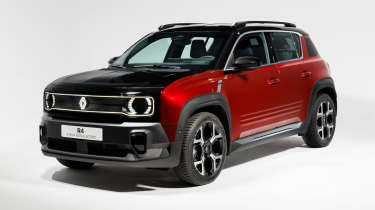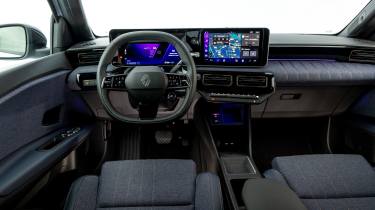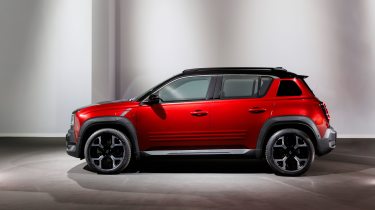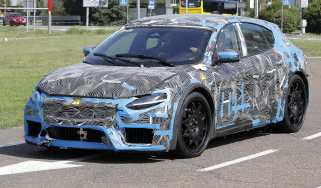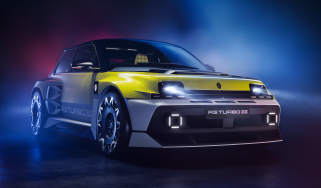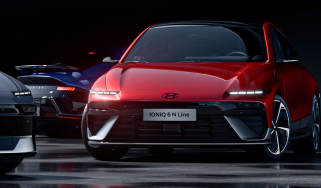New Renault 4 is an electric reboot of a '60s icon
Renault's latest retro EV is a compact crossover inspired by the 4 from 1961
Renault seems to be struck with a severe case of retro fever. Following on from its electric 5 hatch and Twingo EV concept car, it's now unveiled a new Renault 4, which reboots the iconic '60s original in a battery-powered, crossover form.
The cynical among you might wonder how much of the R4's DNA has actually made it through to the new model. The original was a robust, utilitarian people mover, easy to work on yet with plenty of French flair in its design. It was popular, too, with more than eight million sold.
The new one is electric and based on the Renault 5's AmpR Small platform, and while it doesn't tug at the heart strings quite like the original, it's been thoughtfully designed to be roomier than and more useful than its smaller Renault 5 relative. For what it's worth, plenty of '60s design cues have been applied, too.
At the front you'll find a modern interpretation of the old R4's grille/headlight arrangement, with a clear shield covering full width LED running lights. Along the side there are strips pressed into the bodywork to mimic the cladding on the original, while you'll also spot hints of the classic's roof shape and glasshouse. The tapered tailgate is another retro nod, as are the vertical rectangular tail lights.
An extended wheelbase means that the Renault 4 is more spacious than the Renaut 5, but it packs the same motor and battery units within its footprint. That means a floor-mounted battery pack with either 40kWh or 52kWh of capacity, powering a single electric motor at the front axle.
This generates 120bhp or 150bhp depending on spec, with the latter reaching 62mph in under 8.5sec. Top speed is limited to 93mph. Despite the relation to the Renault 5, it's unlikely to spawn a hot Alpine-badged equivalent to go alongside the Alpine A290.
The 4 is a little heavier than the Renault 5 and you'd assume that its boxier design is less efficient through the air, but it achieves a comparative 248 mile range (which drops to 186 miles with the smaller battery).
Topping up the R4 from 15 to 80 per cent takes 30 minutes thanks to 100kW charging capability, and there's bi-directional charging to power appliances while on the move, plus a vehicle-to-grid function to draw energy at the most cost effective times when charging at home.
The cabin is about as roomy as that of Renault's Captur crossover, and most of the architecture has been transplanted from the R5. A 10-inch touchscreen is used for infotainment, set alongside a 7-inch digital dash (which can be upgraded to 10.1 inches). Customers can choose from a variety of upholstery options and recycled fabrics, with a peel-back canvas roof also offered.
Given its brief as a more family-oriented car, the 4 has been set up to be slightly softer than the 5, but retains the hatchback's independent multi-link rear suspension layout, which not many rivals share. It rides on 18-inch wheels and its increased ground clearance makes it more suited to rough terrain than the 5, supported by an Extended Grip traction control system.
It also gets more clever storage solutions, including a larger boot with a low loading lip, lashing hooks plus a split-opening boot floor with storage bins beneath. Oh, and an optional baguette holder. Yes, really.
The R4 will go on sale in the second quarter of 2025, with deliveries following shortly afterwards. Pricing hasn't been announced, but somewhere in the region of £30,000 is expected.

